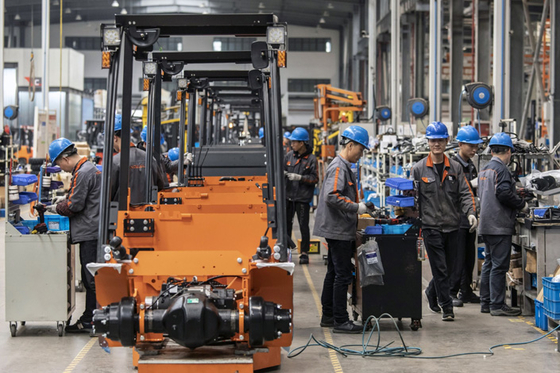The protracted U.S.-China trade war continues to harm China’s export-driven industries, despite a recent 90-day extension of the tariff truce. Most notably, China’s home-appliance exports, which had grown by 13.6% year-on-year in the first quarter, contracted by 2.2% in the second quarter—a dramatic reversal and the sector’s first decline since August 2023. This highlights not only the persistent impact of tariffs but also reflects ongoing disruptions in global supply chains and weakening international demand. For the first half of 2025, the sector’s exports reached $59.29 billion, reflecting 5.1% growth compared to the previous year. However, this rate is less than half the 12.1% expansion seen in the first half of 2024, illustrating a marked slowdown [para. 1][para. 16][para. 17][para. 18][para. 19][para. 20].
Broader economic indicators in China also signal headwinds. Industrial output in July rose only 5.7% year-on-year—the slowest rate in 2025 so far—with a 1.1 percentage-point drop from June. This slowdown reflects both seasonally weaker manufacturing and government-imposed production restrictions intended to curb so-called “involution”—excessive competition within industries. Retail goods sales growth also softened as government incentives for auto trade-in purchases waned. On the investment front, cumulative fixed-asset investment from January to July posted just 1.6% growth, with all three key sectors—manufacturing, infrastructure, and real estate—experiencing deceleration [para. 2][para. 5][para. 6].
Amid this uncertain environment, Hong Kong conglomerate CK Hutchison Holdings Ltd. is weighing the inclusion of a Chinese strategic investor in a consortium bidding for its 43-port global assets, a move reflecting the complex regulatory challenges and geopolitical sensitivities arising from U.S.-China tensions. While the new investor remains unnamed, China Cosco Shipping Corp. Ltd. is a likely candidate. The transaction is not expected to close within 2025 [para. 3][para. 10][para. 11][para. 12][para. 13][para. 14].
On the tech trade front, the U.S. has maintained tight controls over advanced AI chip exports to China. President Donald Trump signaled a willingness to allow Nvidia’s latest chips to enter China, but only if their performance is cut by 30–50 percent. Nvidia will also remit 15% of sales revenue from its H20 chips—specifically tailored for the Chinese market—to the U.S. government as part of a recently authorized agreement. This arrangement typifies U.S. efforts to extract economic concessions while safeguarding advanced technology [para. 7][para. 8][para. 9].
Geopolitical tensions are further evident in financial sanctions. China recently imposed restrictions on two Lithuanian banks in retaliation for the EU sanctioning Chinese lenders over Russia-related dealings. These measures prevent Chinese entities from doing business with the targeted EU banks, underscoring worsening cross-bloc relations [para. 15][para. 16][para. 17].
In separate trade friction, a U.S. International Trade Commission preliminary ruling found China’s BOE Technology Group misappropriated OLED technology from Samsung Display, threatening BOE’s access to the U.S. high-end display market pending a final decision [para. 21][para. 22][para. 23][para. 24].
Despite these economic strains, gold has emerged as a favored safe haven, with prices setting multiple records in 2025. Mining companies have benefited: Newmont Corp.’s first-half profit surged 286%, Zijin Mining forecasted a 54% jump, and other major Chinese producers also posted profit gains exceeding 50%. According to Zijin’s chairman, gold’s reputation as a store of value has been reinforced amid global instability [para. 25][para. 26][para. 27].
AI generated, for reference only
